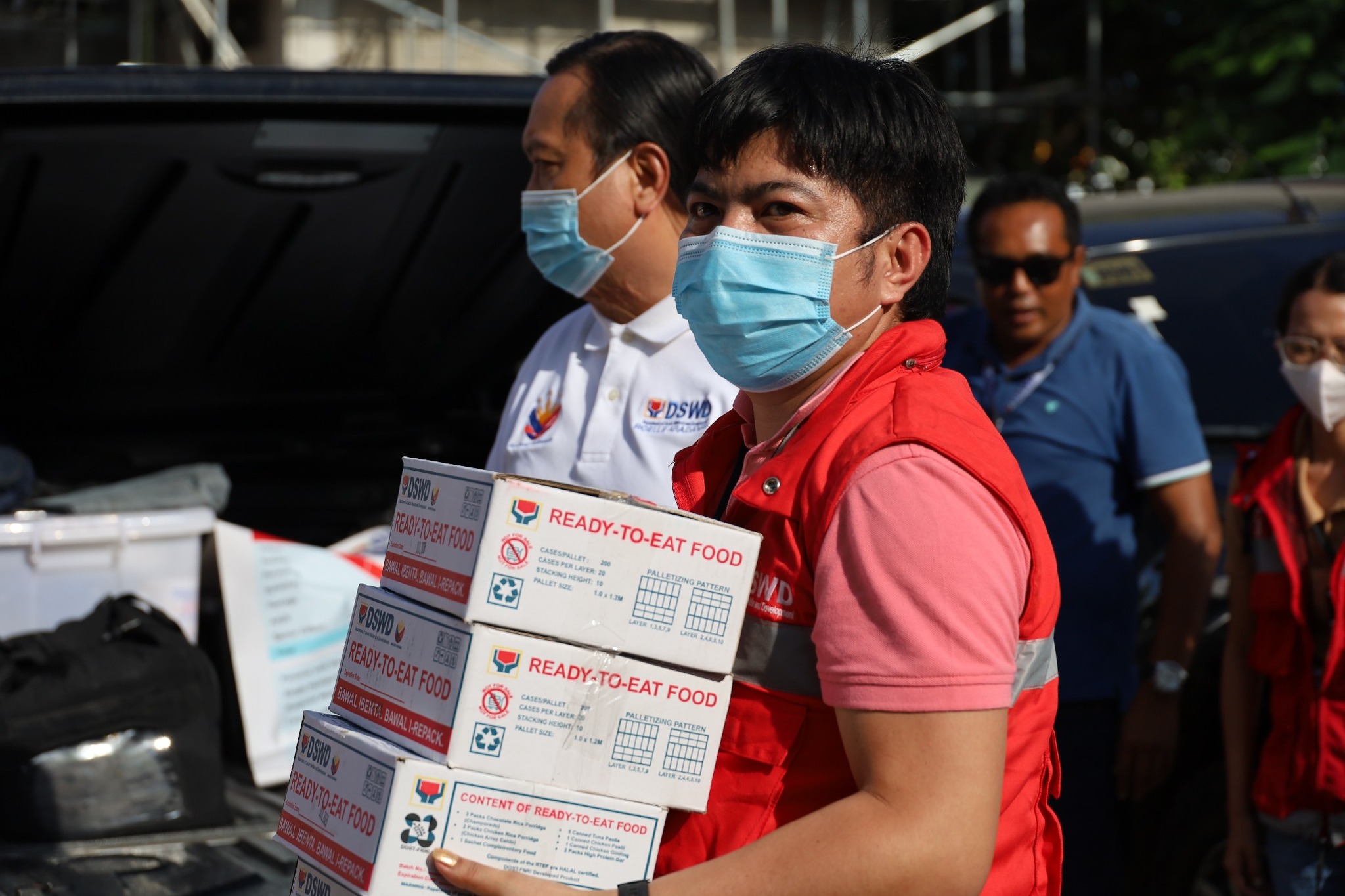
By Jose Cielito Reganit | Philippine News Agency
The Department of Social Welfare and Development (DSWD) is employing a three-phase and rights-based approach to ensure that no internally displaced person (IDP) is left behind in “building back better” after the multiple calamities in recent weeks.
“Our country is disaster-prone. The affected families are often suffering from profound disaster fatigue, characterized by exhaustion, despair and a diminished capacity to cope with ongoing adversity,” Director Maria Isabel Lanada of the DSWD – Disaster Response Management Bureau (DRMB) said in a news release on Tuesday.
She said the systematic and rights-based approach to responding to the needs of IDPs ensures that families are comprehensively supported toward recovery, especially for those affected by successive disasters, ranging from tropical storms to earthquakes.
Lanada said the Phase 1 (meeting basic needs) approach is to respond to the basic rights of the IDPs to life, safety and subsistence. This includes providing food and water, ensuring safe shelter through camp management, and protecting the rights of vulnerable IDPs.
“In areas recently ravaged by the Davao and Cebu earthquakes, interventions involved immediate deployment of prepositioned family food packs (FFP) and ready-to-eat food (RTEF) to provide instant nutrition,” she said.
Aside from food, the agency provided temporary shelter by setting up and operating safe, sanitary, and gender-sensitive evacuation centers in accordance with Camp Coordination and Camp Management and Internally Displaced Persons protection standards.”
To strengthen the initial response, the DSWD acquired mobile kitchens, mobile command centers (MCCs), and water tankers for potable water.
“Under the leadership of Secretary Rex Gatchalian, the DSWD embarked on continuous innovations, especially in disaster management. That is why, aside from our FFPs and RTEF, we have mobile kitchens that provide hot meals to IDPs, as well as water tankers that are now operating in Cebu and Davao disaster operations,” Lanada said.
The MCC, meanwhile, ensures uninterrupted communication with local government units and other government agencies and is helpful when a calamity disrupts regular means of communication.
Lanada said the DSWD transitions to Phase 2 (early recovery efforts) when the food, water, safety, and shelter needs of the affected population are already met.
“The crucial step to a disaster operation is to start efforts at recovery. The DSWD helps in providing intervention to assist families toward achieving normalcy, and start that process of building back better. The Department utilizes its Assistance to Individuals in Crisis Situation (AICS) and Emergency Cash Transfer (ECT) program to help affected families rebuild their lives,” she said.
The ECT is a cash assistance specifically provided to those most affected by disasters and calamities, enabling them to purchase their most pressing post-disaster needs.
“By injecting monetary resources into the community through the cash assistance, the ECT not only benefits families but also speeds up the economic recovery of the community,” Lanada said.
The third phase of DSWD’s disaster operations focuses on helping restore the well-being and psychosocial health of the affected families.
“Calamities cause trauma. Beyond just ensuring food, shelter and water, the DSWD contributes to that important role of helping those affected cope with the mental strains of a calamity by providing psychosocial support services,” she said.
“Genuine recovery needs to be holistic, addressing the intangible aftermath of disaster. The psychological and emotional impact of losing one’s livelihood, home, and sense of security—typical after large incidents such as the recent tropical storms or the powerful Davao and Cebu earthquakes—needs focused intervention,” she added.
Currently, the DSWD is conducting psychosocial first aid, stress debriefing and play therapy for the IDPs of the magnitude 6.9 earthquake in northern Cebu on Sept. 30.
The same psychosocial activities were also provided in other disaster operations and will be replicated by the social workers for the Davao disaster operations.
“The mental health and psychosocial support services of the Department aim to help disaster-affected Filipinos achieve psychosocial resilience, which includes not only physical healing but also complete emotional stability and social reintegration,” the DSWD official said.
In all its disaster operations, Lanada said the three-phase approach is the DSWD’s guide in responding to the needs of the disaster-affected families and individuals.
